Foxgloves are an exquisite addition to any garden, adding height, color, and a touch of whimsy. These striking plants, known by their scientific name Digitalis purpurea, are native to Europe and have been cultivated for centuries for their medicinal properties and ornamental value.
With their tall stalks of bell-shaped flowers in shades of pink, purple, and white, foxgloves are a favorite among gardeners looking to create a bold and beautiful display. However, these plants require specific care and attention to thrive. Here we will cover everything you need to know about growing and caring for foxglove plants.
Then we’ll dive into our step-by-step guide on how to grow and care for foxglove plants, including tips on location, soil preparation, planting, watering, fertilizing, staking, deadheading, dividing, and pest control. We’ll also cover essential care tips for thriving foxgloves and how to propagate them for free.

The Various Types Of Foxgloves
Foxglove plants come in various types, each with unique characteristics and beauty. Each type of foxglove has its specific care requirements, so be sure to research the needs of the specific variety you choose to ensure optimal growth and health. Some popular types of foxgloves include:
- Digitalis Purpurea: This is the most common type of foxglove, known for its tall spikes of bell-shaped flowers in shades of pink, purple, and white.
- Digitalis Grandiflora: This variety has smaller flowers than D. purpurea but is equally stunning. It produces golden-yellow blooms that add a vibrant touch to any garden.
- Digitalis Lutea: This species is characterized by its creamy yellow flowers and bushy growth habit. It is a great choice for adding color to shady areas of the garden.
- Digitalis Ferruginea: With its unique rust-colored spikes of flowers, this variety adds a touch of drama to any garden setting.
- Digitalis Parviflora: This compact variety features small, delicate flowers in shades of pink or white and is perfect for smaller gardens or containers.
Selecting The Perfect Foxglove For Your Garden
When selecting the perfect foxglove for your garden, there are a few tips to keep in mind. First, consider the height and size of the plant. Foxgloves can range in height from 2 to 6 feet, so choose a variety that will fit well in your garden space. Next, think about the flower’s color and shape.
Foxgloves come in various colors, including pinks, purples, and whites, so choose a color that complements your garden palette. Additionally, pay attention to the bloom time. Some varieties of foxgloves bloom in early summer, while others bloom later in the season.
Finally, consider the growing conditions in your garden. Foxgloves prefer partial shade and moist, well-drained soil. By considering these factors, you can select the perfect foxglove variety to enhance your garden’s beauty.
How To Grow And Care For Foxglove Plants: Step-By-Step Guide
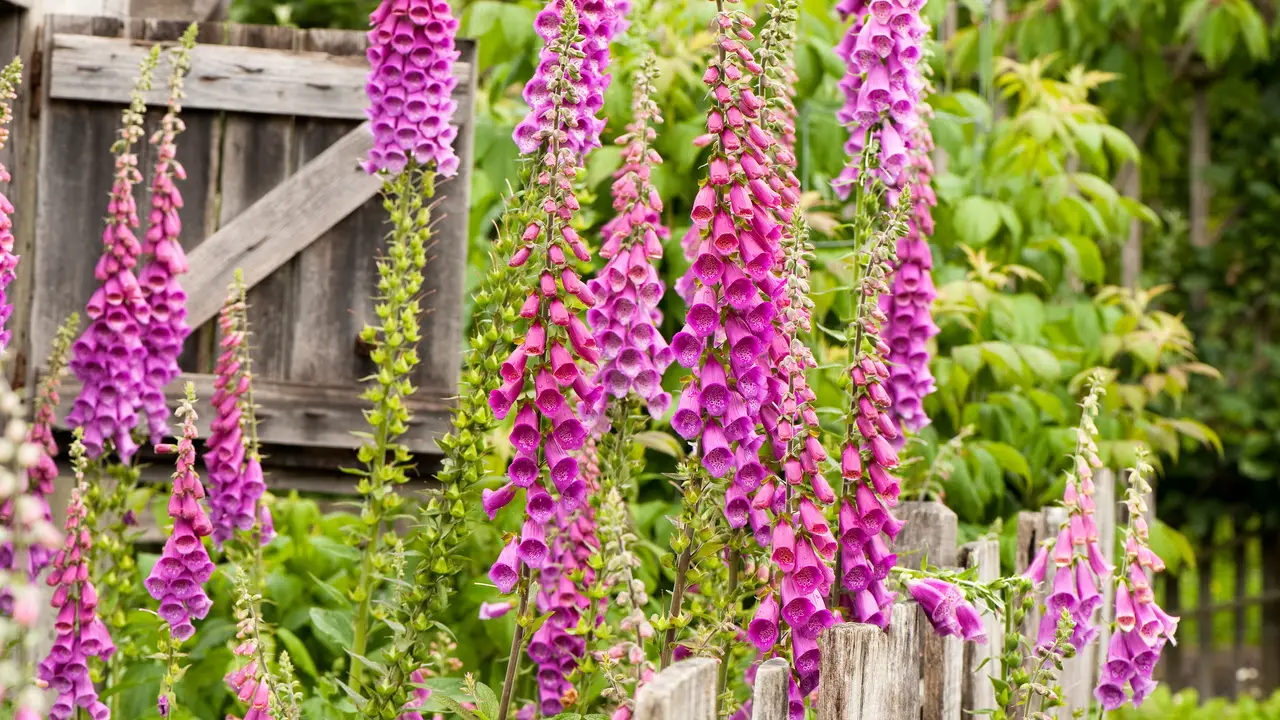
Foxgloves, known scientifically as Digitalis purpurea, are biennial plants that produce tall flower spikes. These beautiful plants come in various colors, such as pink, white, and yellow, adding a touch of elegance to any garden. Foxgloves thrive in partial shade and require rich soil for optimal growth.
Growing and caring for foxglove plants can be a rewarding experience, as these beautiful flowers add a touch of elegance to any garden. Follow this step-by-step guide on how to grow and care for foxglove plants:
Choose The Right Location
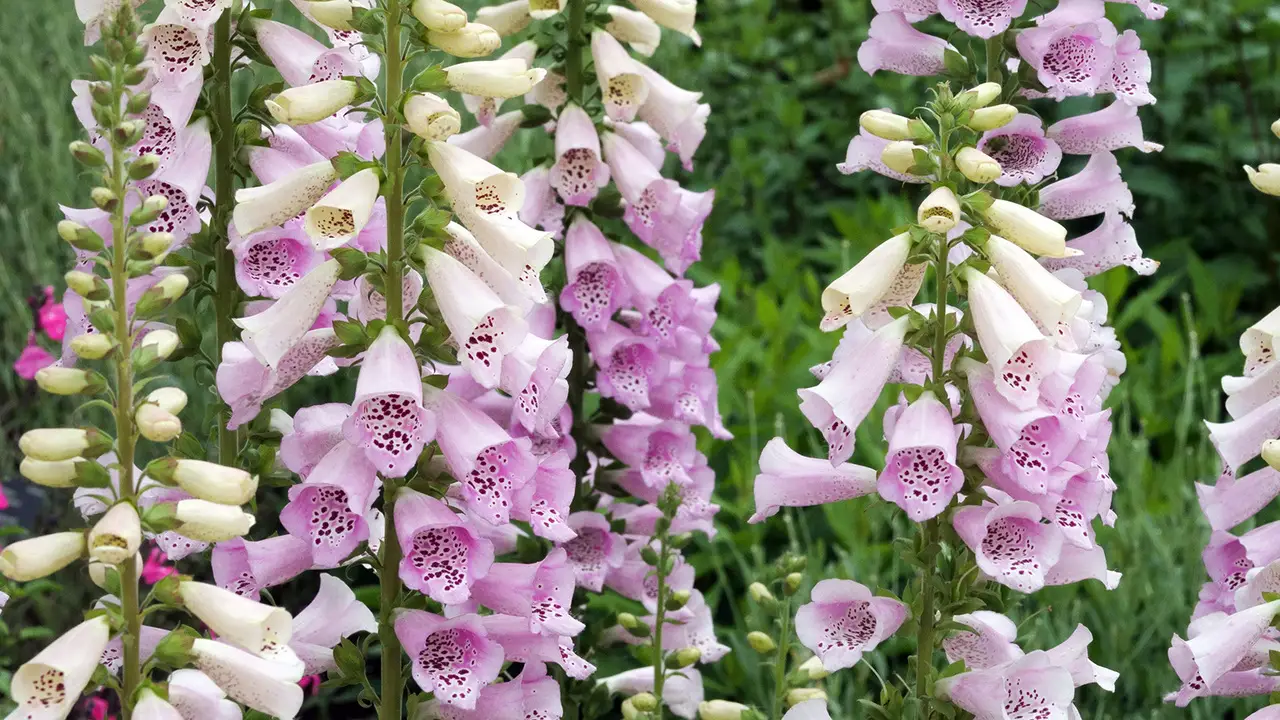
When choosing a location for your foxgloves, it’s important to find a spot that offers partial or light shade. This will help ensure the plants thrive and are not overwhelmed by full sun exposure.
Additionally, ensure the location has well-draining soil to prevent waterlogging, which can harm the plants. By avoiding areas with full sun and selecting a location with partial or light shade and well-draining soil, you’ll create an ideal environment for your foxgloves to grow and flourish.
Prepare The Soil
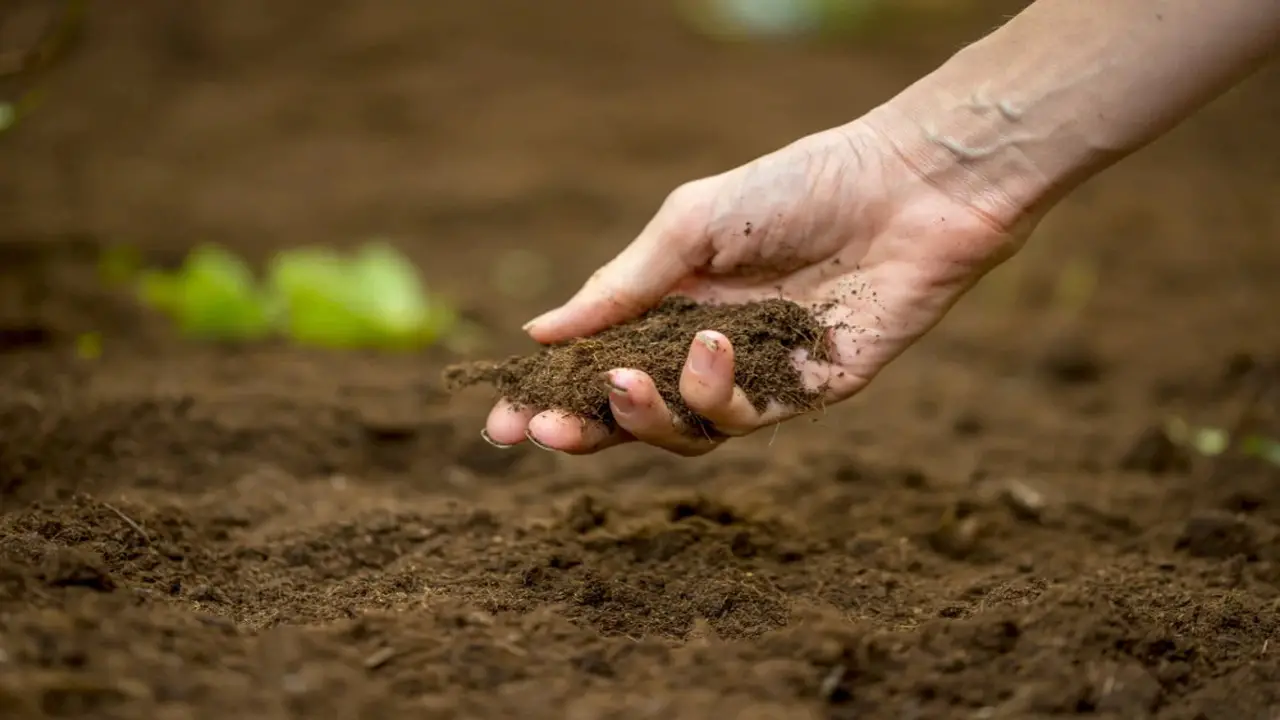
To prepare the soil for your foxglove plants, start by improving its fertility. Add organic matter like compost to enhance its nutrient content. It’s also important to loosen the soil to a depth of 8-10 inches, allowing room for the roots to grow and establish themselves.
This promotes healthy growth and ensures proper nutrient uptake. Before planting, remove any weeds or debris from the area to create a clean and favorable environment for your foxgloves to thrive. Following these steps’ll set a solid foundation for your plants and encourage optimal growth.
Planting
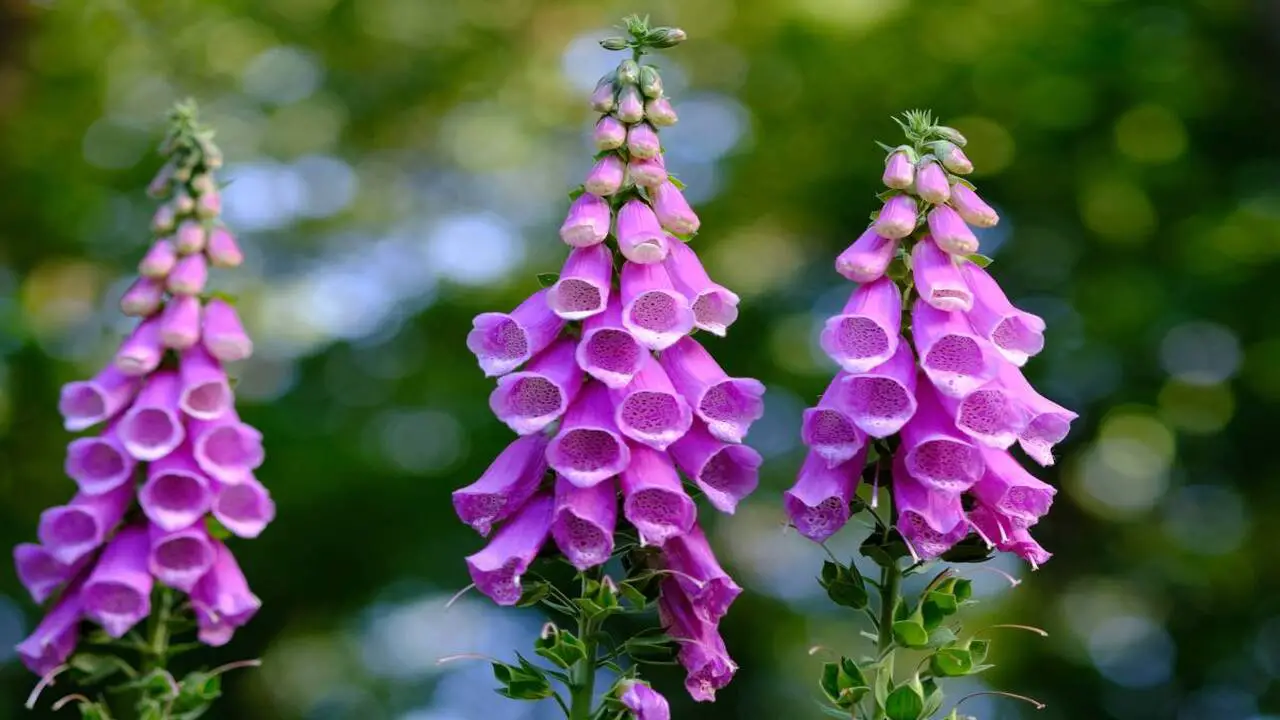
Dig a hole slightly larger than the root ball to plant foxglove plants. Place the plant in the hole at the same level as the surrounding soil. Backfill the hole with soil, ensuring it is firmly packed around the plant. This will provide stability and support as the plant grows.
By following these steps, you can ensure that your foxglove plants are properly planted and have the best chance of thriving in your garden. Remember to choose a location with partial or light shade and well-draining soil to enhance their growth further.
Watering
Proper watering is crucial to ensure your foxglove plants’ healthy growth. After planting, water them thoroughly to settle the soil and promote root establishment. Regular watering is necessary throughout the growing season, especially during dry periods, to keep the soil moist.
However, be careful not to overwater the plants, which can lead to root rot. Remember to strike a balance and provide enough hydration without drowning the roots. Following these watering practices can help your foxgloves thrive and produce stunning tubular flowers in shades of pink, white, and yellow.
Mulching
Mulching is an essential practice for the care and growth of foxglove plants. It offers several benefits, including moisture retention and weed suppression. Organic mulch, such as wood chips or straw, can also provide additional nutrients as it breaks down.
Additionally, applying a layer of mulch helps regulate soil temperature and reduces the need for frequent watering, conserving water in the process. Moreover, mulch acts as a protective barrier against erosion and soil compaction, ensuring your foxglove plants’ overall health and longevity.
Fertilizing
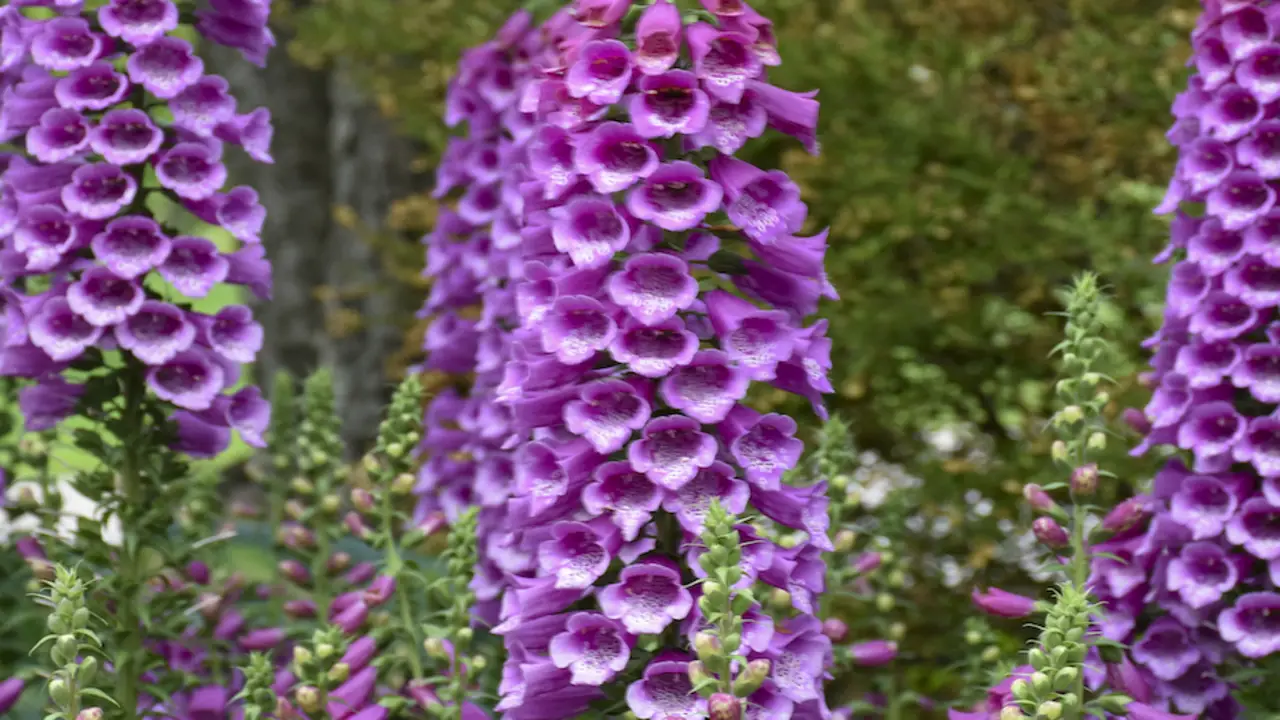
Fertilizing foxgloves is essential for promoting healthy growth and vibrant blooms. Use a balanced fertilizer with equal nitrogen, phosphorus, and potassium to provide the necessary nutrients. Applying the fertilizer in early spring before new growth begins is best.
Follow the manufacturer’s instructions for proper application rates to avoid over-fertilization, which can result in excessive foliage growth and fewer flowers. Remember, a well-fertilized foxglove plant will reward you with beautiful tubular flowers in shades of pink, white, yellow, or purple.
Stake If Necessary
Tall varieties of foxgloves may benefit from staking to provide support for their flower stalks. Sturdy yet inconspicuous bamboo stakes or other supports can be used for this purpose. It is advisable to stake the plants when young to avoid damaging their root systems.
Tie the stems loosely to the stakes using soft twine or plant ties. Regularly check and adjust the stakes as the plants grow to ensure they provide adequate support. This will help prevent the flower stalks from drooping or breaking.
Deadheading
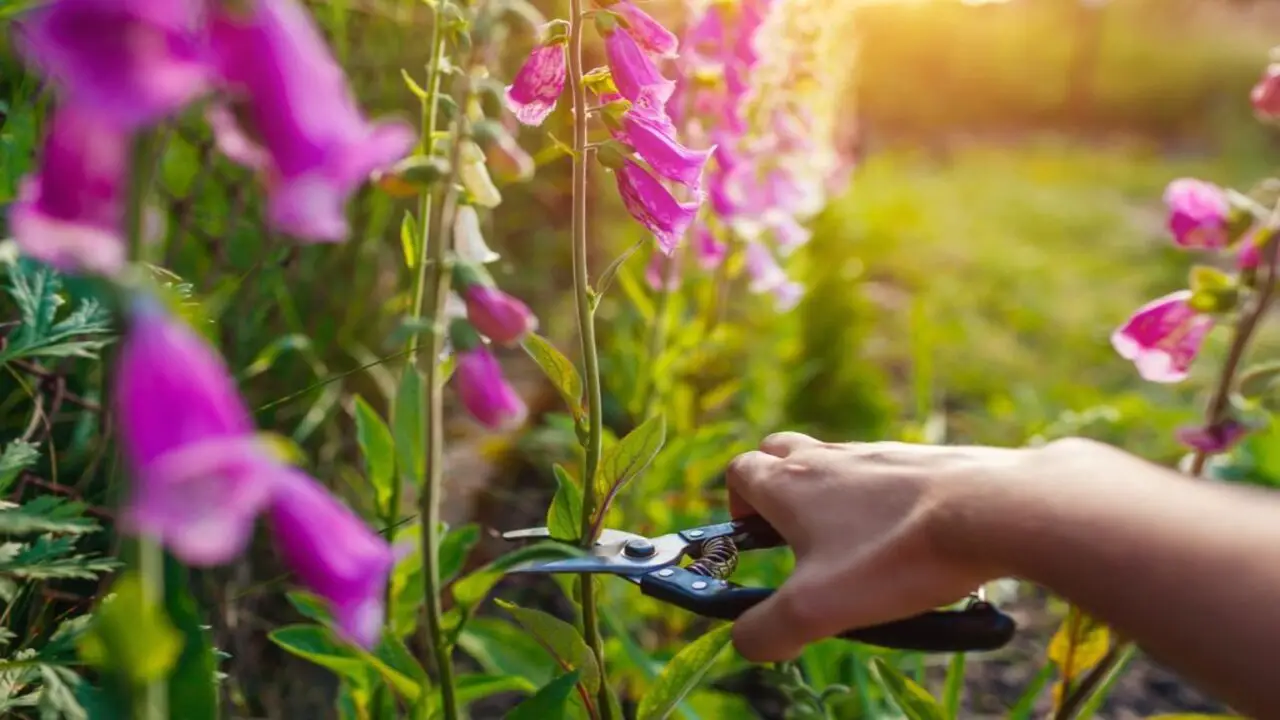
Deadheading spent blooms is essential for foxglove plants to encourage continuous flowering and prevent seed formation. Using clean pruning shears or scissors, carefully remove faded flowers, cutting the stems just above a leaf node or lateral bud.
Regular deadheading promotes consistent blooming and maintains a tidy appearance in your garden. Remember to dispose of the dead flower heads to prevent self-seeding. By incorporating this simple practice into your routine, you can enjoy the lovely flowers of foxgloves throughout the growing season.
Dividing
Dividing established foxglove plants is a rejuvenating practice that stimulates better growth. It is best done in early spring or late summer when the plants are not blooming. Carefully dig up the entire plant, paying attention to the root system.
Gently separate the clumps into smaller sections, ensuring each division has roots and foliage. Replant the divisions in prepared soil and water thoroughly, and continue caring for them as usual. This process promotes healthier foxglove plants and allows you to expand your collection or share with fellow gardeners.
Watch Out For Pests And Diseases
Pests and diseases can threaten the health and vitality of your foxglove plants. Common pests that may affect these plants include aphids and slugs. Regularly inspecting your plants for signs of infestation, such as distorted leaves or holes, is important. Organic pest control methods like handpicking or insecticidal soap can help keep these pests at bay.
It’s also crucial to monitor for diseases like powdery mildew or leaf spot and take appropriate action. Creating proper spacing, ensuring good air circulation, and providing adequate sunlight can help prevent disease.
Determining The Ideal Time And Place To Plant Foxgloves
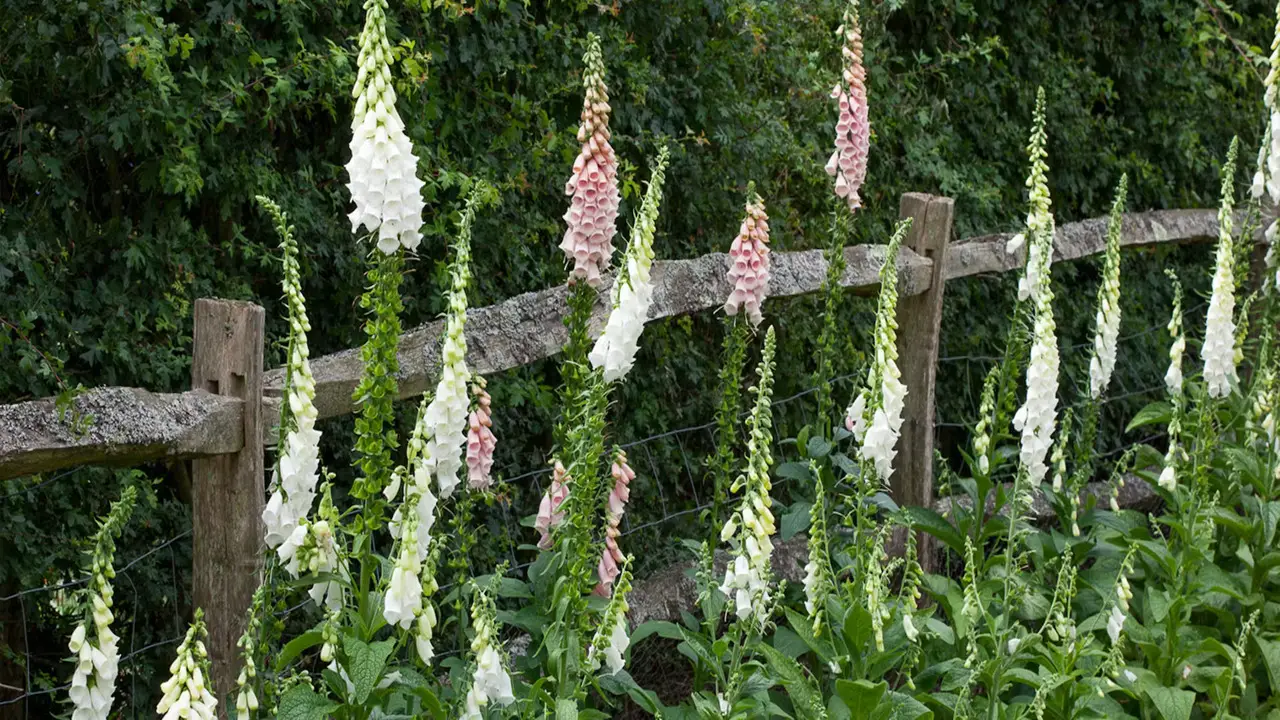
Determining the ideal time and place to plant foxglove plants is crucial for their successful growth and care. Foxgloves are biennial plants, meaning they have a two-year life cycle. The best time to plant foxgloves is in early spring or late summer, as this allows the plants to establish their root systems before facing extreme heat or cold temperatures.
When choosing a location for planting, it is important to consider the needs of foxgloves. They thrive in partial shade to full sun and prefer well-draining soil rich in organic matter. Additionally, foxgloves can grow quite tall, so provide them with enough space to reach their full height without overcrowding other plants.
Essential Care Tips For Thriving Foxgloves
Growing and caring for foxglove plants can be a rewarding experience, but it does require some essential care tips to ensure they thrive. You can enjoy healthy and vibrant foxglove plants in your garden by following these care tips. Here are some key tips to keep in mind:
- Choose The Right Location: Foxgloves prefer partial shade to full sun, so find a spot in your garden with the right amount of sunlight.
- Prepare The Soil: Foxgloves prefer well-draining soil rich in organic matter. Amend your soil with compost or well-rotted manure before planting.
- Water Regularly: Keep the soil evenly moist but not waterlogged. Water deeply whenever the top inch of soil feels dry to the touch.
- Mulch Around The Plants: Apply a layer of mulch around the base of the plants to help retain moisture and suppress weeds.
- Provide Support: Foxgloves can grow tall and may require support to prevent them from toppling. Use stakes or plant them near a fence or trellis for support.
- Deadhead Spent Flowers: Remove faded flowers to promote continuous blooming and prevent self-seeding.
- Watch Out For Pests And Diseases: Keep an eye out for common pests like aphids and slugs and diseases like powdery mildew. Treat any issues promptly to prevent damage to your foxgloves.
How To Propagate Foxgloves For Free
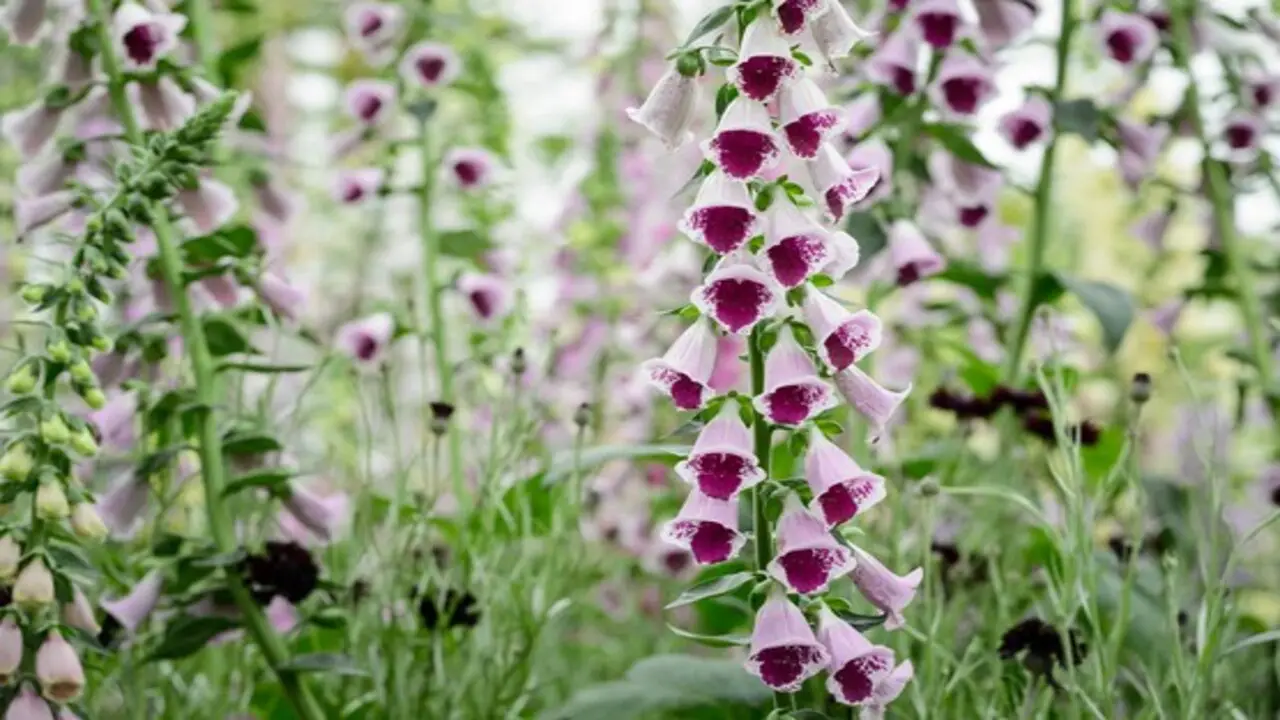
Collect fresh seeds from mature plants during the growing season to propagate foxgloves for free. In late summer or early fall, sow the seeds directly into the soil or start them indoors in early spring. Once the young seedlings have a few leaves, transplant them into your desired location. Another way to propagate foxgloves is by dividing mature plants every two years.
These simple methods allow you to grow more of these lovely flowers without spending extra money. Experiment with different varieties, such as the common foxglove (digitalis purpurea) or the yellow-flowered digitalis grandiflora, to add a touch of beauty to your garden.
Common Problems And Troubleshooting Solutions
Growing and caring for foxglove plants can be a rewarding experience, but like any plant, they can sometimes face common problems. Here are some tips for troubleshooting common issues that may arise with your foxglove plants:
- Wilting Or Drooping Leaves: This can be a sign of underwatering or root rot. Ensure to water your plants regularly, keeping the soil moist but not soggy. If root rot is suspected, carefully remove the plant from its pot and inspect the roots for any signs of decay. Remove affected roots and repot the plant in fresh, well-draining soil if necessary.
- Yellowing Leaves: Yellowing leaves can indicate nutrient deficiencies or overwatering. Foxgloves prefer slightly acidic soil with good drainage. Consider adding a balanced fertilizer to provide essential nutrients and adjust watering practices to prevent waterlogged soil.
- Pests: Common pests that may affect foxglove plants include aphids, slugs, and snails. To control aphids, spray the affected leaves with mild soapy water or use an insecticidal soap. For slugs and snails, handpicking or using organic slug repellents can help keep them at bay.
- Powdery Mildew: Powdery mildew is a fungal disease that often appears as a white powdery substance on the leaves of plants. To prevent powdery mildew, ensure proper air circulation around your foxglove plants by spacing them adequately and avoiding overcrowding. If powdery mildew occurs, you can treat it with a fungicide specifically formulated for this disease.
Safety Precautions When Handling Foxglove Plants
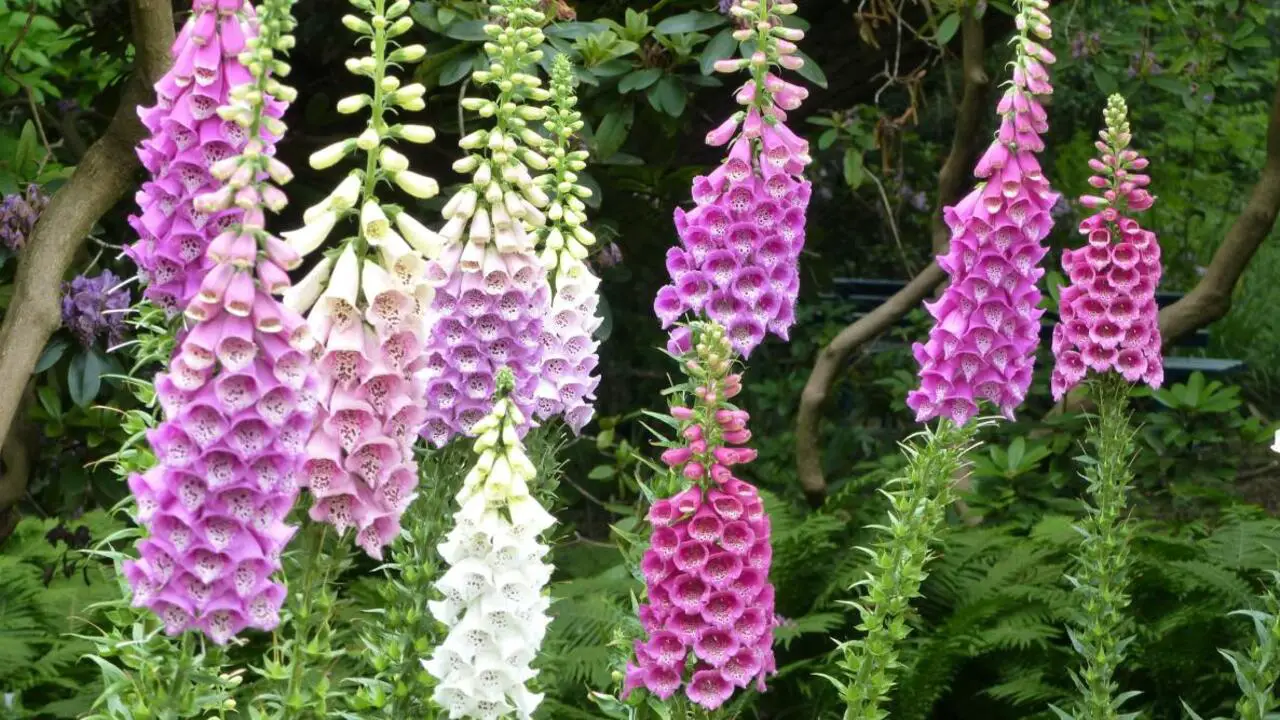
It’s important to take some safety precautions when it comes to growing and caring for foxglove plants. While these plants can add beauty to your garden with their tall spires of colorful flowers, they also contain toxins that can be harmful if ingested or if the sap comes into contact with your skin.
By following these safety precautions, you can enjoy the beauty of foxglove plants while minimizing the risk of potential harm. Here are some tips to stay safe when handling foxglove plants:
- Wear Gloves: When working with foxgloves, always wear gloves to protect your hands from directly contacting the plant’s sap.
- Avoid Ingestion: Foxglove plants are poisonous if eaten, so keep them out of reach of children and pets. If you have small children or curious pets, consider planting foxgloves in an inaccessible area.
- Wash Your Hands: After handling foxgloves, thoroughly wash your hands with soap and water. This will help remove any sap that may have come into contact with your skin.
- Educate Yourself: Familiarize yourself with the symptoms of foxglove poisoning, such as nausea, vomiting, irregular heartbeat, and confusion. If you or someone you know experiences these symptoms after contacting a foxglove plant, seek medical attention immediately.
Conclusion
Growing and caring for foxglove plants can add a touch of charm and beauty to your garden. With their showy blooms and unique shape, these plants are sure to catch the eye of any passerby. Following the steps outlined on how to grow and care for foxglove plants, you can ensure that your foxgloves thrive and flourish.
Remember to choose the right location, prepare the soil, and provide proper care throughout the growing season. Additionally, be aware of common pests and diseases that may affect your plants and take necessary precautions. So bring some fabulous foxgloves into your garden for a stunning display of color and elegance.
Frequently Asked Questions
1.Are There Foxgloves That Will Bloom The Same Year You Start The Seed?
Ans: Yes, some foxglove varieties like “Pam’s Choice,” “Apricot Beauty,” and “Foxy” can bloom in the same year they are started from seed. Starting these seeds indoors with sufficient light and moisture is crucial for successful growth. Follow specific planting instructions for each variety.
2.Does Foxglove Come Back Every Year?
Ans: Foxgloves are biennial or short-lived perennial plants. In their first year, they grow leaves and a rosette; in the second year, they bloom. After blooming, foxgloves may self-seed and come back on their own. Deadhead spent blooms and cut back stems after flowering to ensure continued growth.
3.Where Is The Best Place To Plant Foxglove?
Ans: For optimal growth, foxgloves thrive in partially shaded areas with well-drained soil. Choose a spot that receives morning sun and afternoon shade. Avoid planting them in windy or extremely hot locations. Consider pairing them with other perennials like hostas or ferns for an enchanting garden display.
4.How Do I Extend The Lifespan Of My Foxgloves?
Ans: To extend the lifespan of your foxgloves, regularly deadhead the spent blooms to promote new growth. Keep the soil moist but not waterlogged by watering them regularly, especially during dry spells. Mulching with organic materials can help retain moisture and provide nutrients. Protect from winds and heavy rain by staking or planting in a sheltered location.
5.When Is The Best Time To Plant Foxglove Seeds?
Ans: The ideal time to plant foxglove seeds is late summer or early fall. This allows for the necessary cold stratification process, which helps with germination. If planting in spring, start the seeds indoors about 6-8 weeks before the last frost date. Always ensure well-draining soil and consistent moisture for successful establishment.



